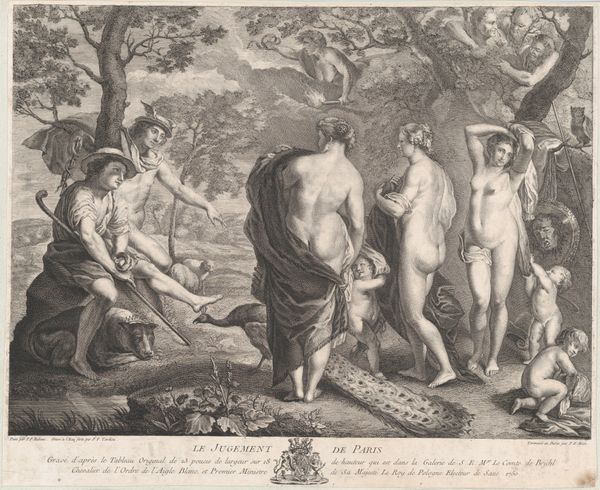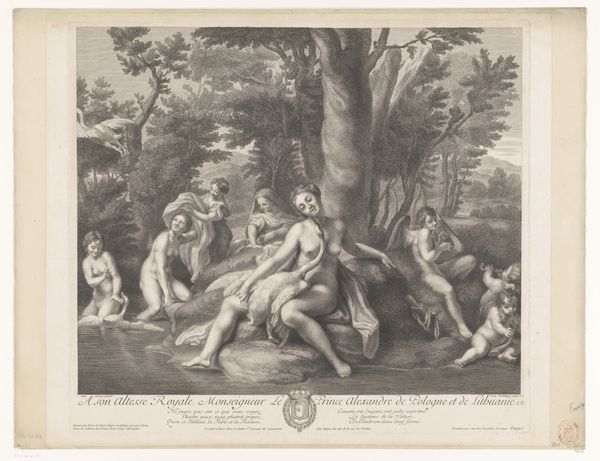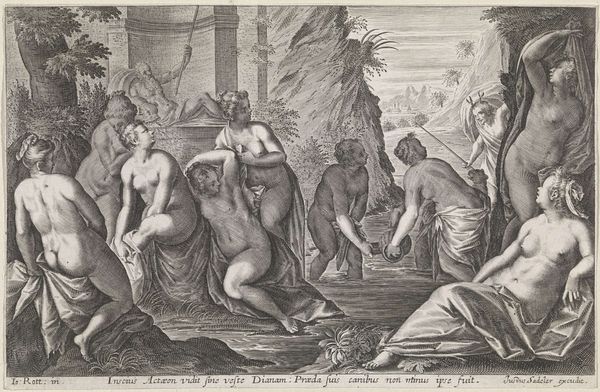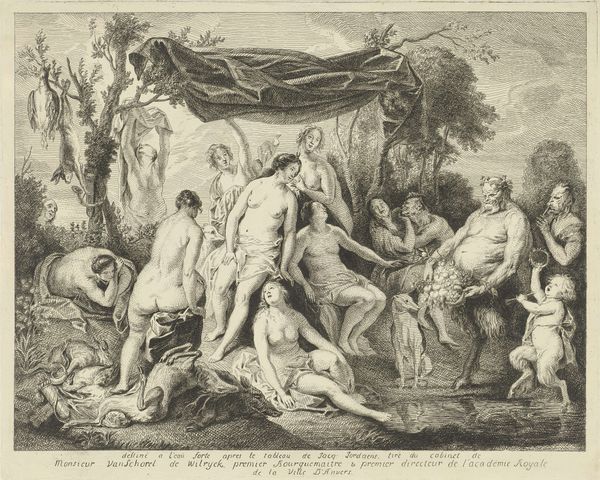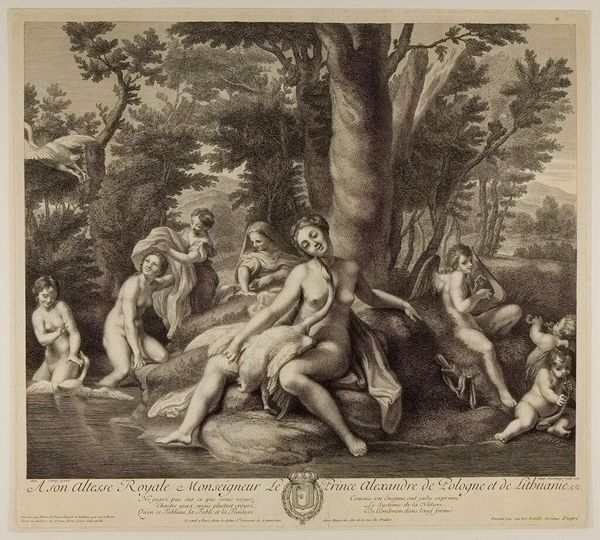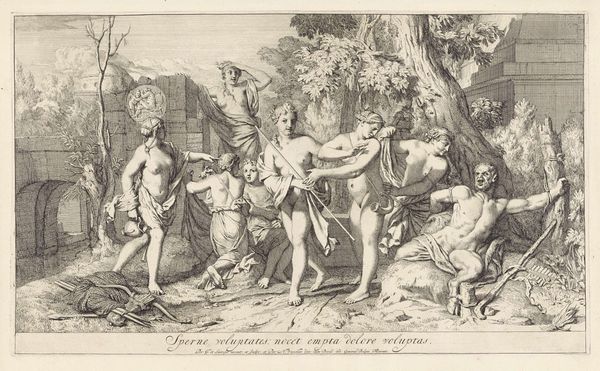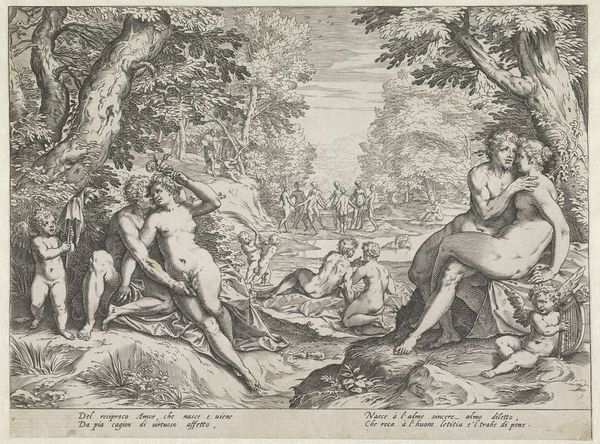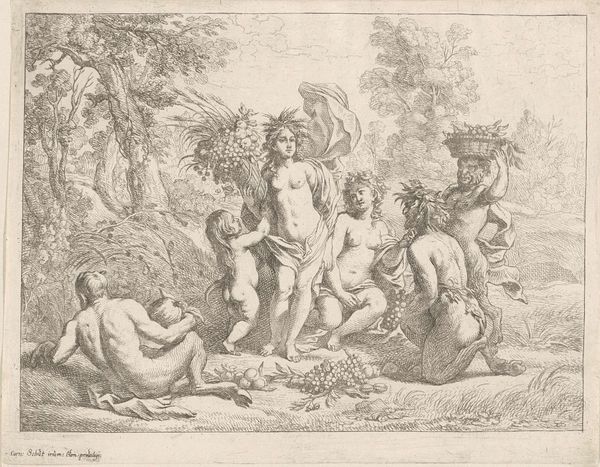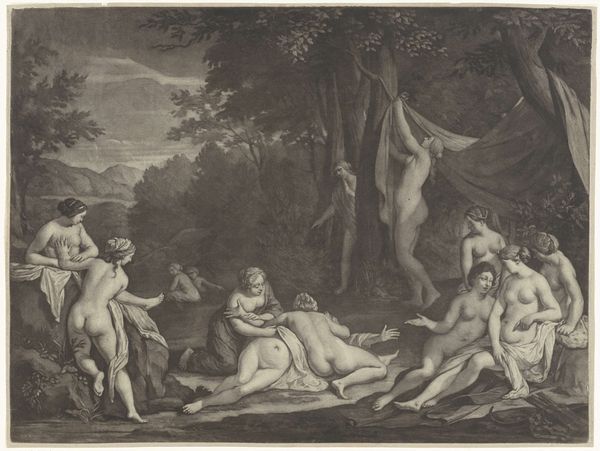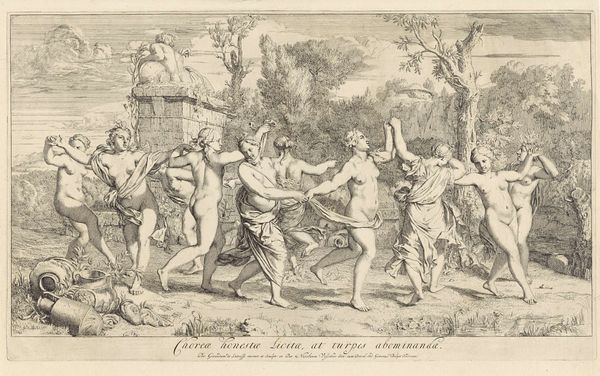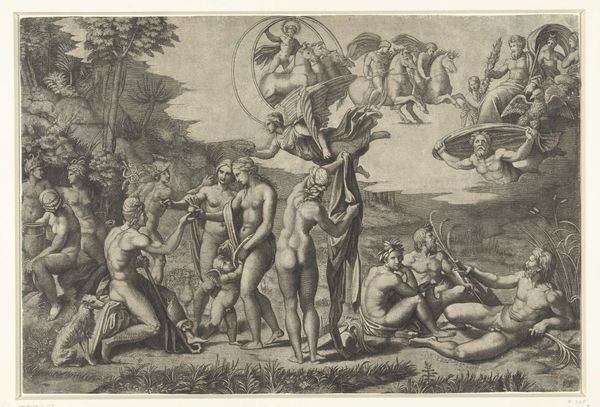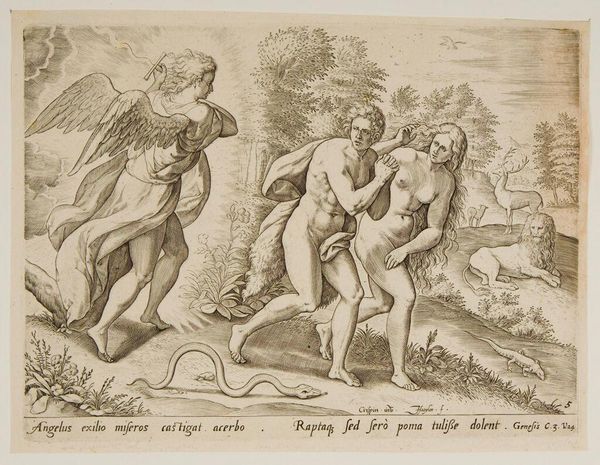
print, engraving
#
allegory
#
baroque
# print
#
landscape
#
figuration
#
history-painting
#
nude
#
engraving
Dimensions: height 227 mm, width 298 mm
Copyright: Rijks Museum: Open Domain
Curator: This engraving, titled "Diana en Callisto," was created by Matthijs Pool sometime between 1696 and 1727. The Rijksmuseum is fortunate to have it in its collection. Editor: My immediate impression is that of hidden activity amidst lush nature. You see figures, clearly female, intertwined with dogs and rocky landscapes, a story unfolding. Curator: Precisely! It depicts a pivotal moment from Ovid's Metamorphoses. Diana, goddess of the hunt, discovers that her nymph, Callisto, is pregnant, having been seduced by Jupiter. The allegory speaks volumes about female virtue and the patriarchal structures of the time. Editor: Thinking about it as an engraving, you’ve got this stark contrast between the figures' flesh and the sharply rendered lines of the landscape—look at the lines giving shape to the foliage and waterfall behind. It all stems from a deeply laborious and crafted process, using the burin to methodically carve the image. What do you think that meant to its original viewers? Curator: Prints like this facilitated the dissemination of classical stories. While ostensibly didactic, instructing viewers in moral tales, they were also consumed as decorative objects, collected by the bourgeoisie who sought to emulate aristocratic patronage of the arts. Editor: It's intriguing to see the mythological nude becoming domestic currency, reproduced through repeatable means. Here, art isn't just inspiration, but something reproducible and accessible, which inevitably changes its function in society. Curator: It absolutely shifts the perception of art away from singular preciousness towards broader cultural availability. The visual vocabulary established in painting found a new life in these affordable reproductions. Editor: I see how the choice of engraving, with its repeatable process, allowed these myths, and with them, a perspective on the morality and stories that held the gaze of society to travel freely in ways painting couldn't. Curator: Reflecting on it, "Diana en Callisto" showcases not just a story but also the dynamics of art production and reception during that era, and a fascinating example of the Baroque style taking on moral complexities. Editor: Yes, it highlights how artistic techniques democratized classical narratives.
Comments
No comments
Be the first to comment and join the conversation on the ultimate creative platform.

